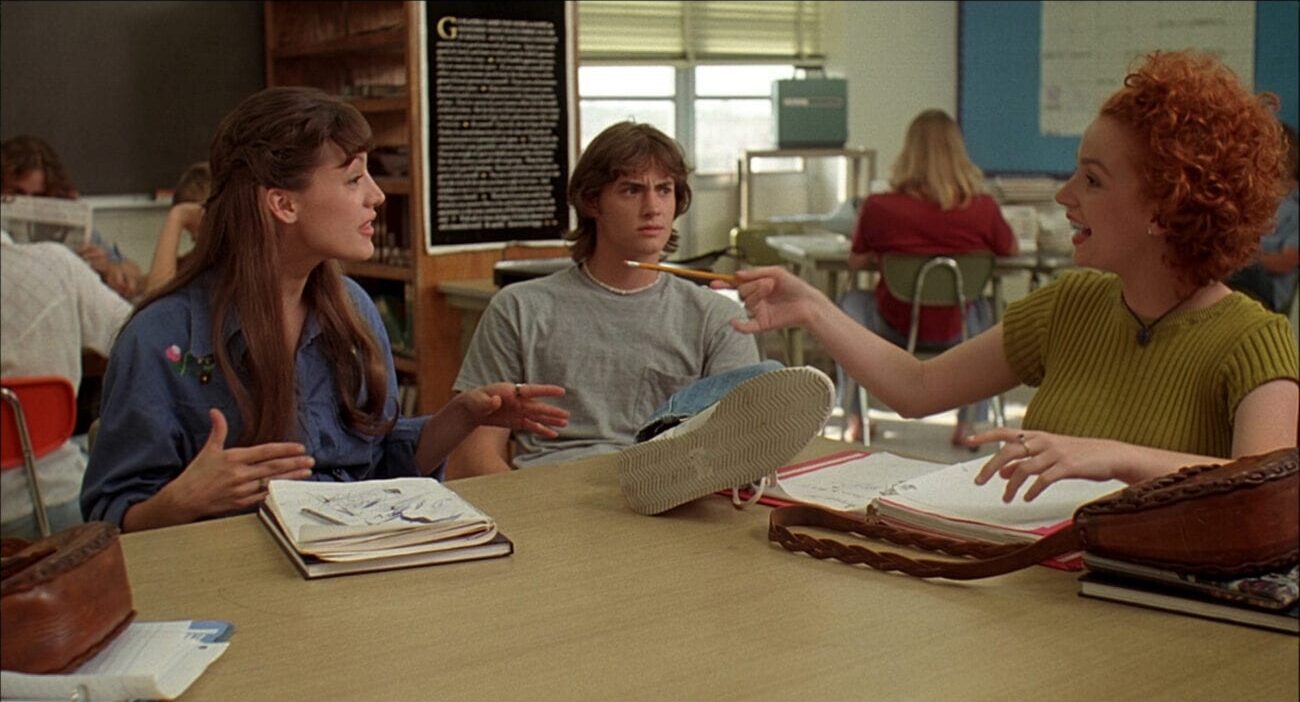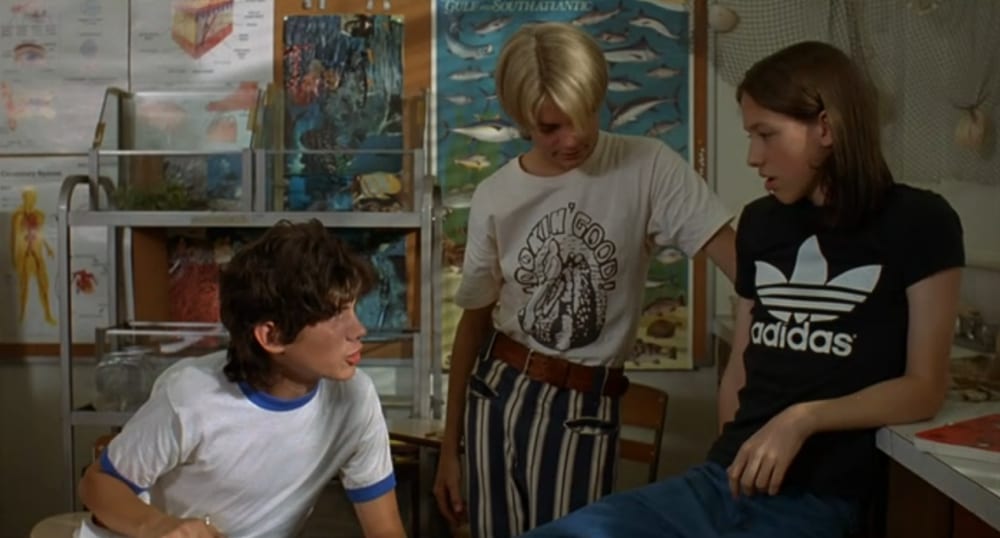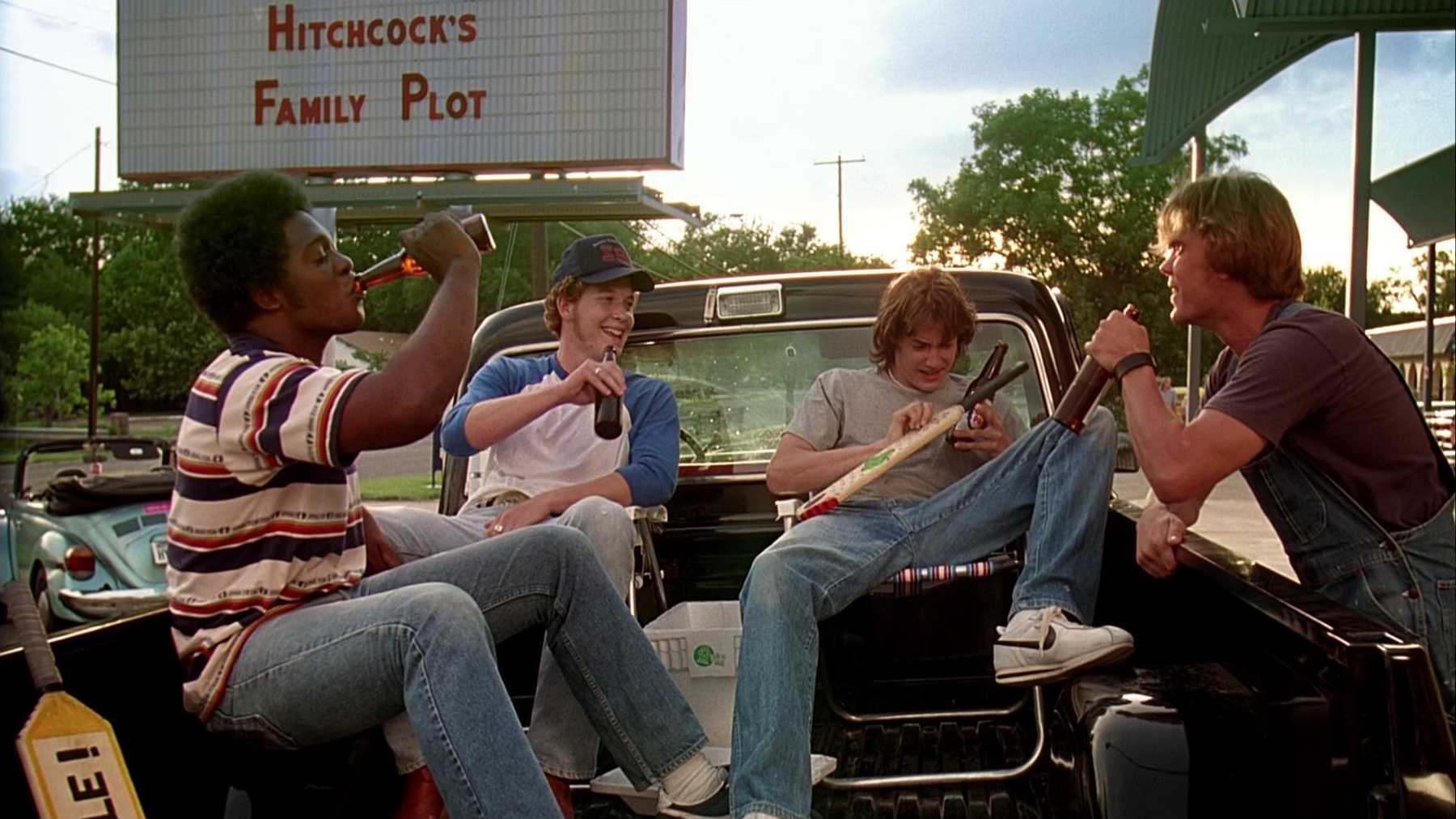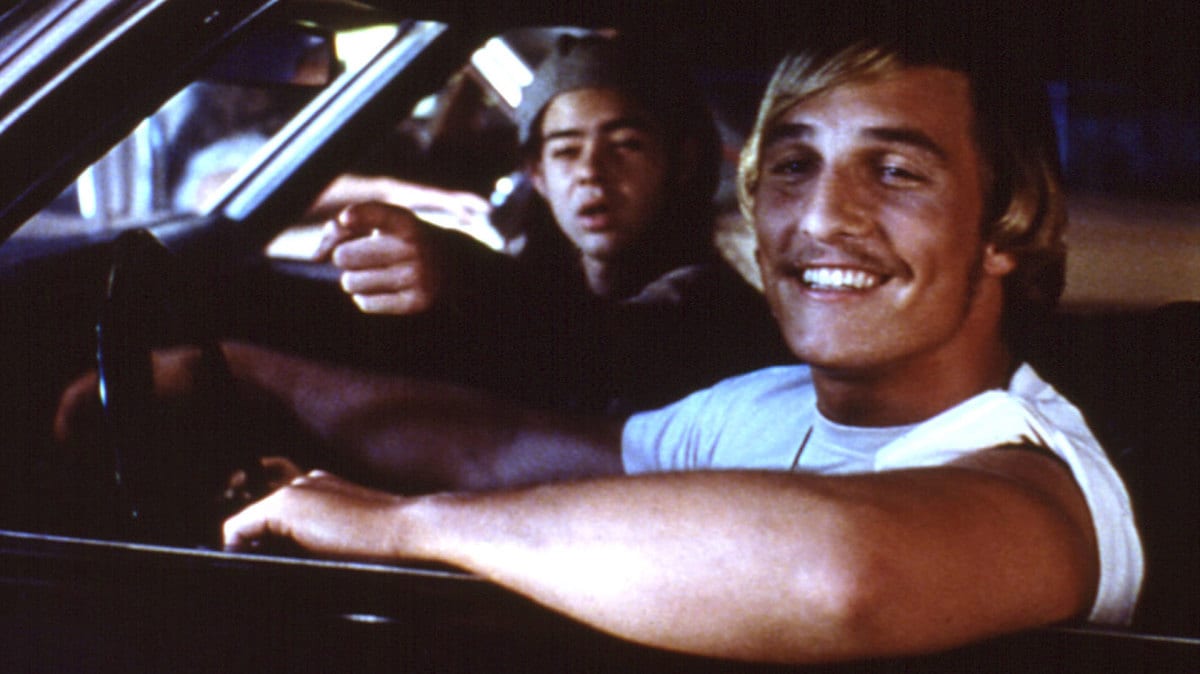It’s hard to be nostalgic for a time period you didn’t experience, and yet Dazed and Confused makes you feel this way so effortlessly. Richard Linklater’s Dazed and Confused is possibly one of the greatest American films about American life, next to American Graffiti and Nashville. Though it wasn’t a commercial success at the time, it’s been on several “best of” lists over the last few decades, and it’s earned its spot in the Criterion Collection. It’s a light film, which makes it so comfortable to watch.
First, I’d like to discuss the cultural context of when this film is set: the summer of 1976, leading up to the U.S. bicentennial celebration. School has just let out for summer in the suburbs of Austin, Texas, and the students of Lee High School are finally free—just like their forefathers freeing themselves from British rule, but, you know, in a less serious context. But the political climate of the time did not reflect one of liberation, but rather one of despair. Ford was sinking the economy, Nixon had just resigned because of Watergate, and we’d just lost the Vietnam war. Things were looking bleak for the country, and the attitudes of the youth reflected that.
In the summer of 1976, there was a lot of youthful apathy toward politics, largely as a result of post-Vietnam disillusionment and post-Nixon government distrust. The bicentennial was not a time of patriotism, but instead a time of anti-government mindsets among teens. Of course, I was not around during this time, so I had to consult my father, who was Mitch’s (Wiley Wiggins) age at the time (and coincidentally was also very into baseball), and various online sources. Teens either did not care about politics at all or were very opposed to the American government—largely because they learned from the Vietnam War that war is not always justified. The deaths of their friends, siblings, and sons were all for nothing—we did not accomplish our “goal” in Vietnam, and so many were killed or wounded in the war, so what was the point of it?

And you see this in the entire tone of Dazed and Confused. There are numerous situations during which American symbols are outright disregarded. In the very first scene, there is a mural of Uncle Sam in the high school hallway that’s been defaced to look like he’s been smoking pot. Later in the film, Pickford (Shawn Andrews) and Michelle (Milla Jovovich) steal statues from around town and paint them to look like members of the band KISS. Even without any outright statements condemning the government, this film conveys the apathy the youth have toward politics. For a film that’s based around what was supposed to be such a culturally significant moment, the 200th anniversary of the birth of our nation, it doesn’t focus on that theme so much. The only characters who really gripe about the state of the nation are the nerds: Tony (Anthony Rapp), Cynthia (Marissa Ribisi), and Mike (Adam Goldberg).
What it does focus on, however, is the sense of freedom, which is arguably more American than any holiday. The students are finally free from the grasp of the American education system, albeit temporarily. As the Alice Cooper song “School’s Out” goes, “No more pencils, no more books, no more teacher’s dirty looks.” They’re experiencing the first moments of sweet summer freedom after a long school year, and they could not be more excited. As such, they could not care less about anything else that’s going on in society. The characters in Dazed and Confused have one mission and one mission only: enjoy summer. And what’s more American than freedom?
Dazed and Confused depicts the lack of care suburban American teens felt toward the bicentennial in 1976. While it’s the backdrop for the film and is thematically relevant, virtually none of the film is spent focused on it. In fact, the majority of the film is spent with groups of teens in cars shooting the s–t and listening to what’s now known as classic rock. The big moment the film leads up to is a kegger in the woods on the last day of school. It begins with the last few moments of Pink’s (Jason London) junior year of high school, the anticipation of the release. An exciting time for the incoming seniors, but a frightful time for incoming freshman.

Back to the music of the film, which is arguably one of the most important aspects of Dazed and Confused. This type of rock-and-roll can also be classified as “dad rock.” What’s “dad rock,” you ask? Just picture a suburban father grilling in the backyard in the summer while listening to AC/DC and Led Zeppelin—that’s dad rock. Now, when you pictured that dad, you pictured him wearing a polo shirt as his “nice” shirt for the party, some cargo pants, white New Balances, and a penchant for former President George W. Bush, right? These dads were all teens in the ’70s, like our characters in the film, protesting against their parents’ politics and sticking it to the man. And yet, as they grew up, they became more conservative in their views and have ended up very similar to the very people they loathed. I think that “dad rock” is partially to blame.
Hear me out: The genre itself has stamped itself into the American lexicon as the sound of the country. Nothing is more American than rock-and-roll, and nothing is more rock-and-roll than the ’70s. And nothing is more American than blind, unending patriotism. In Dazed and Confused, when the boys smash a patriotic-themed mailbox, they are chased by the homeowner with a gun (another hallmark of American culture) and shot at when they peel out. The adults in this film take their loyalty to the country seriously. What teenager wants to emulate their parents? Most rebel and act as opposed to them as possible, whether through direct dissent like the nerds, rebellion like the stoners, or apathy like the jocks in the film. Perhaps it’s this rebellious spirit that made rock-and-roll so appealing to the youth, and rock and roll became a symbol for Americana, which thus perpetuates the cycle of rebellion and compliance.
So you have the teens, and you have the adults, and then you have Wooderson (Matthew McConaughey), the exception to the rule. He’s a twentysomething hippie loser who hangs out with the high school crowd (and preys on the high school girls). Wooderson looks like he would’ve been prime drafting age for Vietnam, but something about him tells me he dodged the draft. With a cool car of which he has subpar knowledge—as evidenced in an interaction with Clint (Nicky Katt) at the Emporium—and the ability to buy kegs, he’s seen as the coolest guy in town by these teens. To a parent, he’d be the last person you want your kids hanging out with. He’s the great outlier of the film, and as such, these rules of the cycle do not apply to him. It’s almost as if he’s a cautionary tale for the teens, to steer them toward becoming that “dad rock” parent.

Despite Wooderson being a total creep, he and his car are very important to the story. The majority of this film is spent in cars driving around doing nothing, or going to Top Notch (the carhop restaurant that’s featured frequently in the film), or at the Emporium playing pool and foosball. It’s just a bunch of normal teen stuff, nothing super-eventful. And with each scene of driving comes a new classic rock song. No seriously: The only other times a song comes on are at major plot points, like when Mitch sets the bait for O’Bannion (Ben Affleck) outside the Emporium and Foghat’s “Slow Ride” plays. This song comes back later in the film when Mitch is relaxing in bed after a good night at the party at the moon tower, signifying the character’s satisfaction with both events.
One could argue that since the songs appear both in the driving sequences and the major plot points that all of the seemingly aimless driving is a major plot point itself. I mean, really, this is the bulk of these teenagers’ lives. They’re carefree, now that school is over, and bored. Going on beer busts and chasing down freshmen to paddle as part of some cruel tradition are really all there is to do on a summer’s night in the suburbs. And all of this driving is really fun for these teens—they’re just happy to be spending time with their friends. It’s important to the characters of Dazed and Confused, so it should also be important to us, the viewers. The journey is just as important as the destination, sometimes more important. Lots of important decisions are made on the road, like whether or not to sign your coach’s pledge to stay drug- and alcohol-free over the summer.
Driving, for me, is like meditation; I get my best ideas while driving. Sometimes I just drive by myself for hours just to clear my head. But driving with friends is a totally different ballpark. It’s bonding time—a mini party. You come up with the best things to talk about and have some of the deepest conversations. Watching Dazed and Confused just makes me want to get in a car with my best friends and just drive around getting food and beers.

I wish I could live in the world of Dazed and Confused. The whole idea of driving around and gossiping with my girlfriends while listening to War’s “Low Rider” sounds like such an ideal high school vibe to me. Part of the reason I love this film so much is because of the aesthetic of it. Everything just screams ’70s, from the costumes to the filming locations to the cars. You’ve got your bellbottoms, your wide-collared shirts, your afros. Top Notch and the Emporium and the moon tower all have a very ’70s vibe. All of the cars are of really nice vintage, which might not have been realistic for the period but are aesthetically pleasing to look at. The whole film just really captures a snapshot of the time in a visual way, which it makes it so easy to watch.
Dazed and Confused was one of the first films I saw that is part of the Criterion Collection. It takes you back to a time and place so perfectly like American Graffiti and Nashville do—a slice of life from a different era. It’s not your average period piece with some dramatic story of royalty or wartime. The film depicts everyday people doing everyday things, nothing crazy and unattainable. It creates this sense of ease, the joy, and carelessness of being 17 and living comfortably, financially speaking. You get a nostalgic feeling, but (for me at least) for a time you never physically experienced. It’s odd how connected you feel to the world this film creates from your first watch to your 20th. It makes you feel like you’re home, even though you’re at the time of the bicentennial with a bunch of apathetic teenagers.
An appropriate depiction of the youth attitude in 1976, Dazed and Confused really thoroughly captures the essence of the exact location and time period it takes place in. And above that, it brings you back to exactly where you were on your last day of school. That feeling of freedom and excitement and relief. Couple that with the nostalgic comfort this film exudes, and you have a perfect array of emotions. No matter how many times I see this film, I will always be excited to watch it for that sweet, sweet portal back in time. This film gets older, but high school nostalgia stays the same age.


